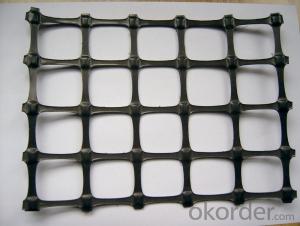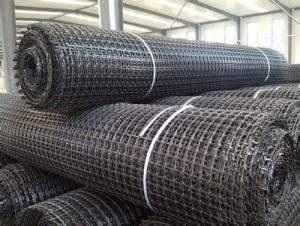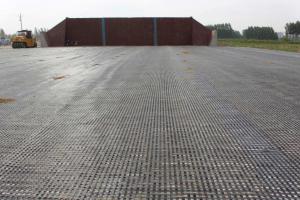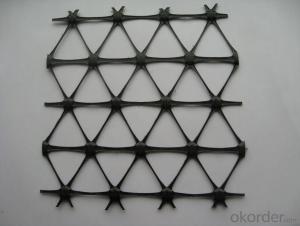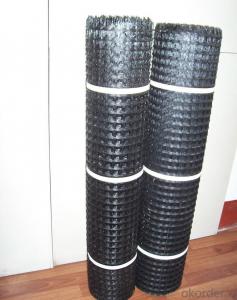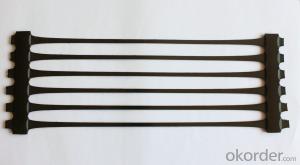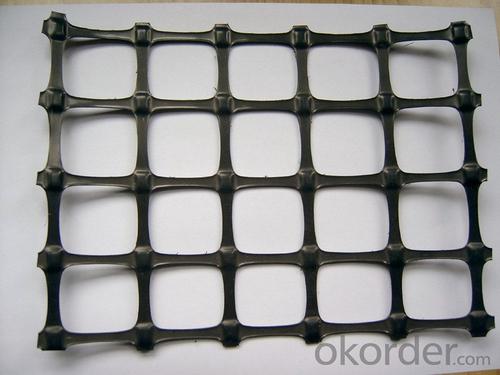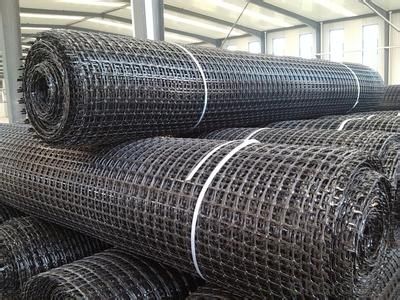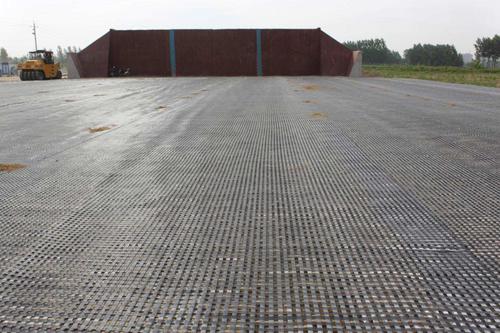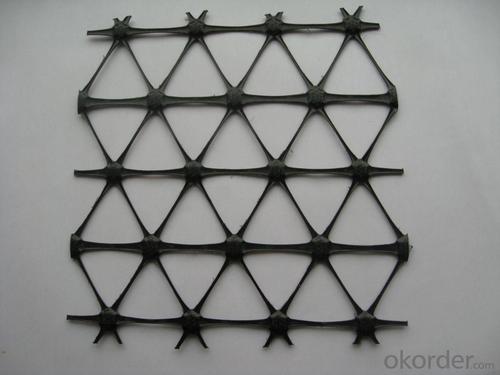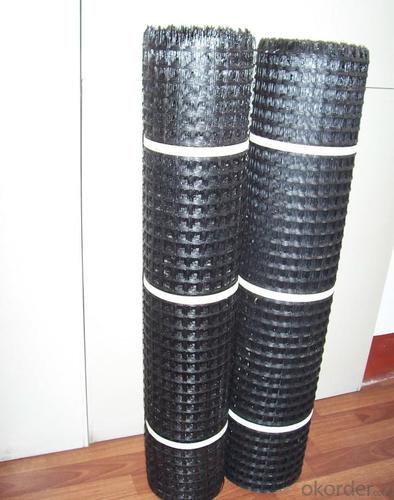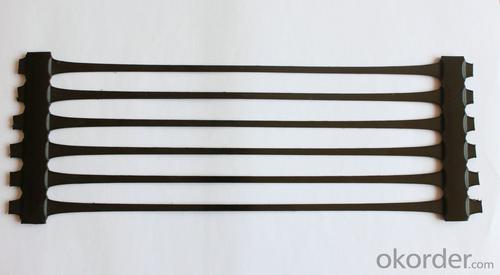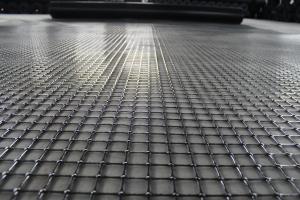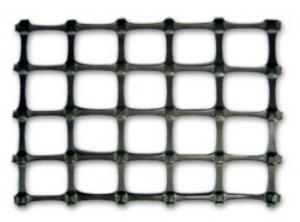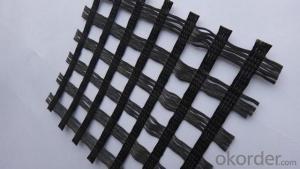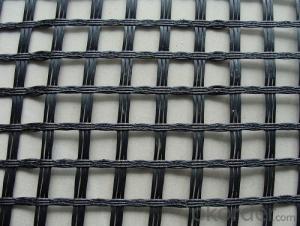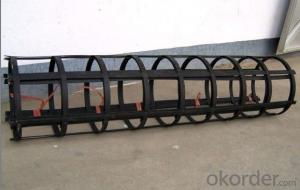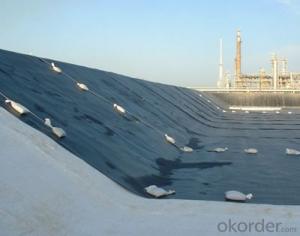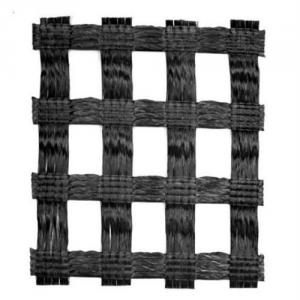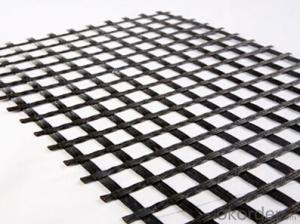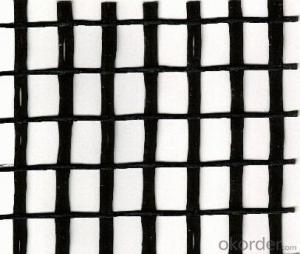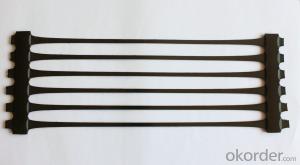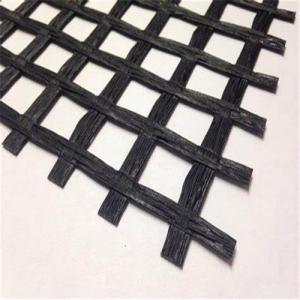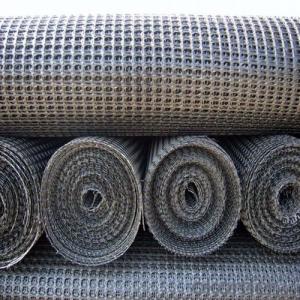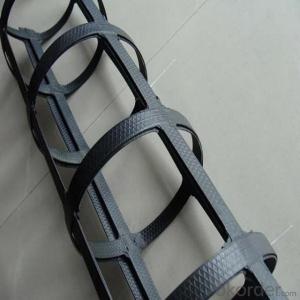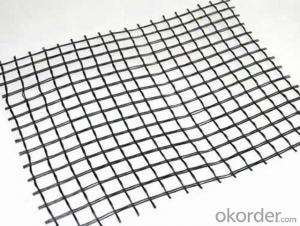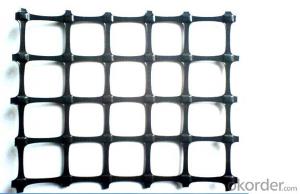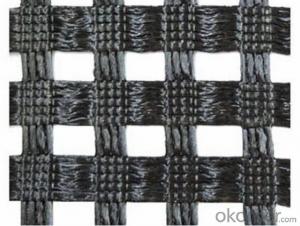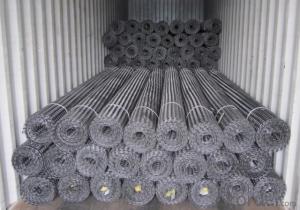Uniaxial Fiberglass Earthwork Base Material Geogrid
- Loading Port:
- Shanghai
- Payment Terms:
- TT OR LC
- Min Order Qty:
- 50000 m²
- Supply Capability:
- 200000 m²/month
OKorder Service Pledge
OKorder Financial Service
You Might Also Like
Fiberglass Earthwork Base Material Geogrid
Description Of Fiberglass Earthwork Base Material Geogrid:
Fiberglass geogrid is a kind of new favorable earthwork base material to strengthen the road surface and roadbed.This product is made by weaving and covering fiberglass filament. It is featured by high vertical and horizontal tensile strength,low unit extension, high flexibility, and favorable high and low temperature resistance.The products after surface covering own the favorable property of alkali resistance and aging resistance. It is used widely to increase the asphalt road surface, concrete road and roadbed (both soft and hard road surfaces).Compared with the traditional road surface, it reduces the cost, prolong the service life, and avoid the reflection road crackle.This product is also used to strengthen the soft land, such as railway, airport, irrigation work, and dyke, etc, and the roadbed.
Main Features of Fiberglass Earthwork Base Material Geogrid:
(1)High tensile strength in both the vertical and horizontal directions;
(2)Low elongation;
(3)Excellent temperature ;
(4)Good anti-age and alkali-resistance;
(5)Reduce construction cost, extend service life of road and prevent deflection cracks.
This product is formed by weaving and covered with aphalt or PVC.
Specifications of Fiberglass Earthwork Base Material Geogrid:
Tensile Strength (KN) | Warp | >30 | >50 | >60 | >80 | >100 | >120 | >150 | >200 |
Weft | >30 | >50 | >60 | >80 | >100 | >120 | >150 | >120 | |
Elongation(%) | <4< p=""> | <4< p=""> | <4< p=""> | <4< p=""> | <4< p=""> | <4< p=""> | <4< p=""> | <4< p=""> | |
Mesh Size(mm) | 25.4*25.4 | 25.4*25.4 | 25.4*25.4 | 25.4*25.4 | 25.4*25.4 | 25.4*25.4 | 25.4*25.4 | 25.4*25.4 | |
Elastic Modulus | 76 | 76 | 76 | 76 | 76 | 76 | 76 | 76 | |
Width(m) | 1~6 | 1~6 | 1~6 | 1~6 | 1~6 | 1~6 | 1~6 | 1~6 | |
Length(m) | 50~300 | 50~300 | 50~300 | 50~300 | 50~300 | 50~300 | 50~300 | 50~300 | |
Temperature Resistant(℃) | -100~280 | -100~280 | -100~280 | -100~280 | -100~280 | -100~280 | -100~280 | -100~280 | |
Resin Content (%) | 18~20 | 18~20 | 18~20 | 18~20 | 18~20 | 18~20 | 18~20 | 18~20 | |
Glue Type | Bitumen PVC SBR soakage | Bitumen PVC SBR soakage | Bitumen PVC SBR soakage | Bitumen PVC SBR soakage | Bitumen PVC SBR soakage | Bitumen PVC SBR soakage | Bitumen PVC SBR soakage | Bitumen PVC SBR soakage | |
Applications of Fiberglass Earthwork Base Material Geogrid:
1.It reinforced old asphalt concrete road surface and asphalt surface layer ,and prevents damage
2.It is used for rebuilding cement concrete road surface into composite road surface and restraining reflection caused by block contraction
3.It is used inroad expansion and improvement project and crack by old and new combination position and uneven sedimentation
4.It is used in soft soil base reinforcement treatment ,is favorable for soft soil water separation and concretion ,restrains sedimentation effectively ,distributes stress uniformly and improve overall strength of road base
5.It is used for preventing contraction crack caused by new road semi-rigid base layer , and reinforcing and preventing road
surface crack caused by foundation crack reflection .
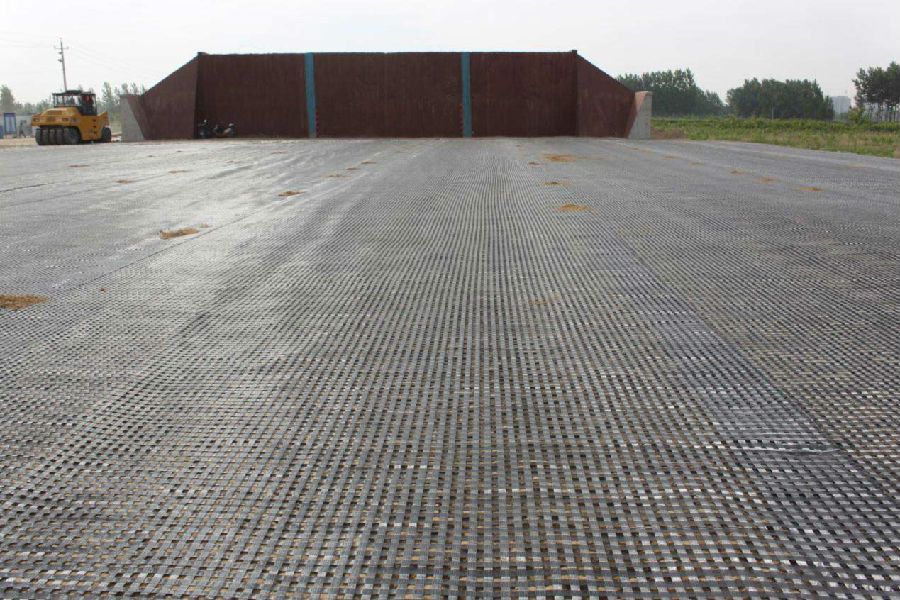
IMages of Fiberglass Earthwork Base Material Geogrid:
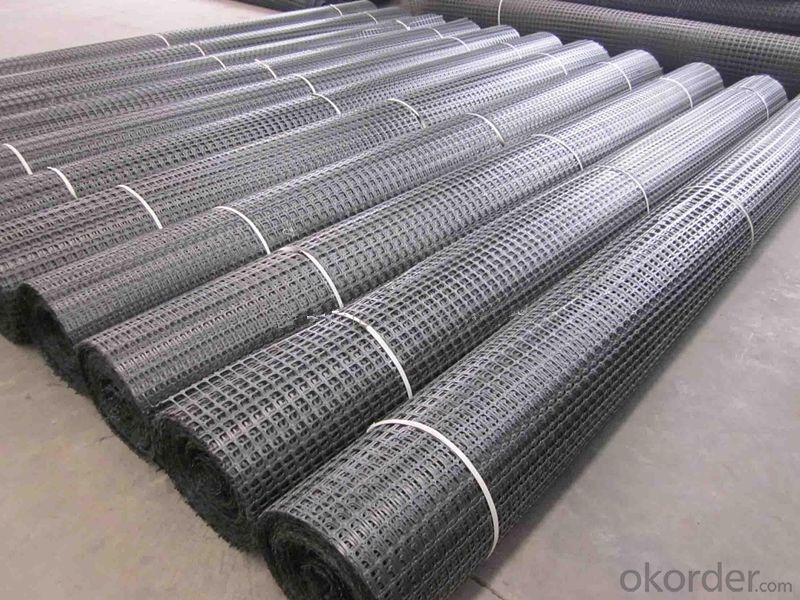
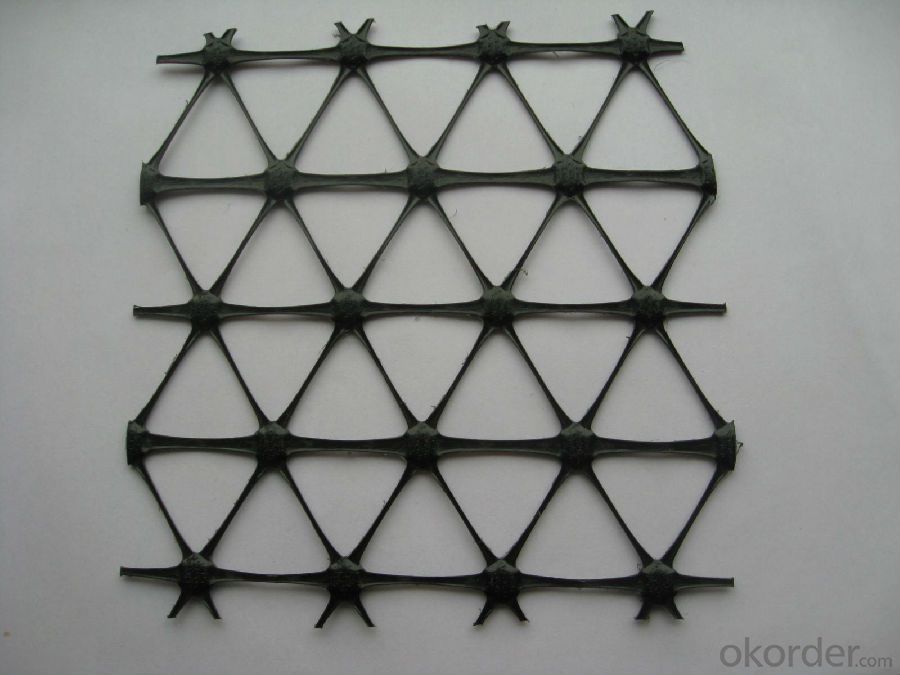
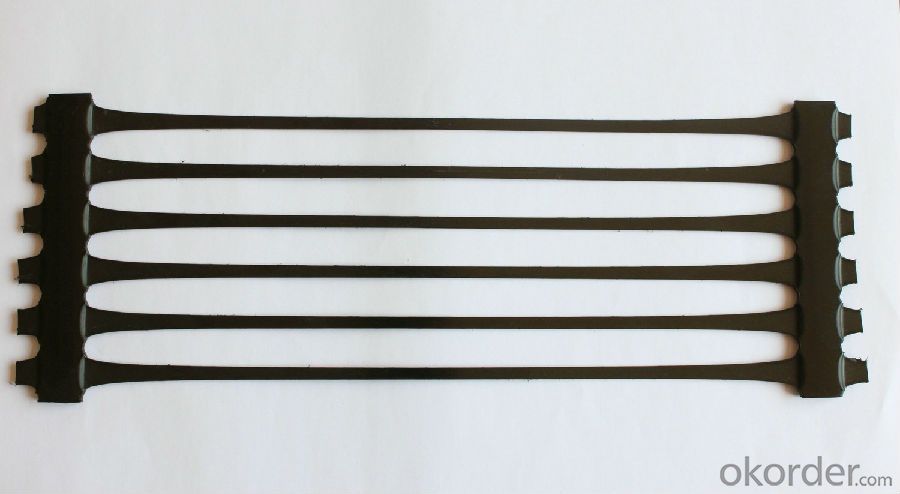
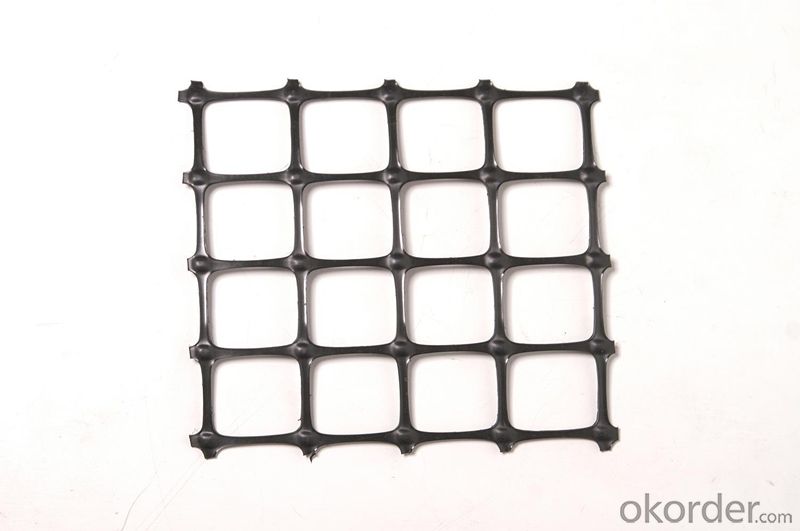
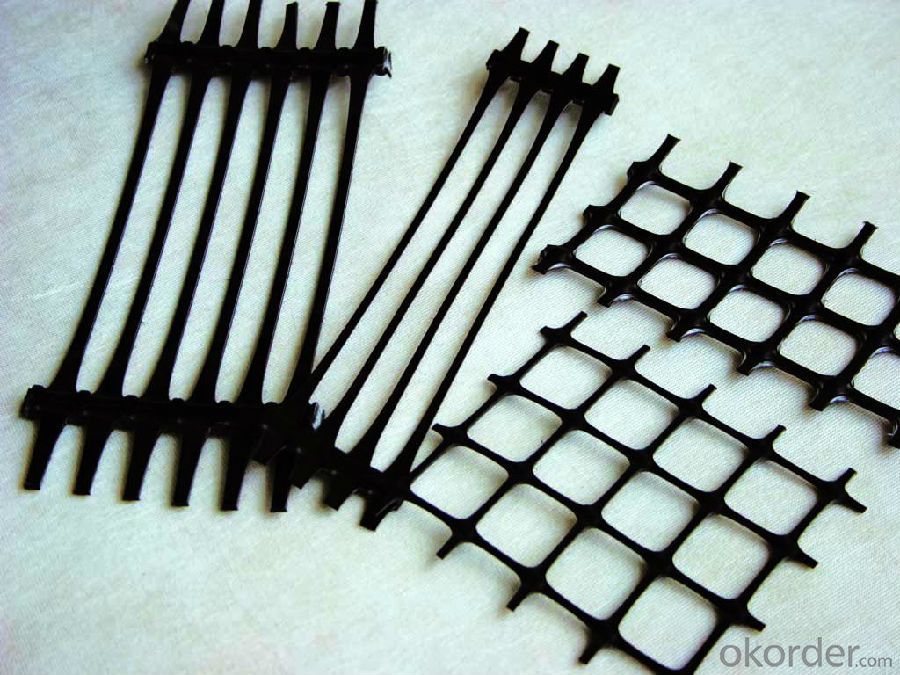
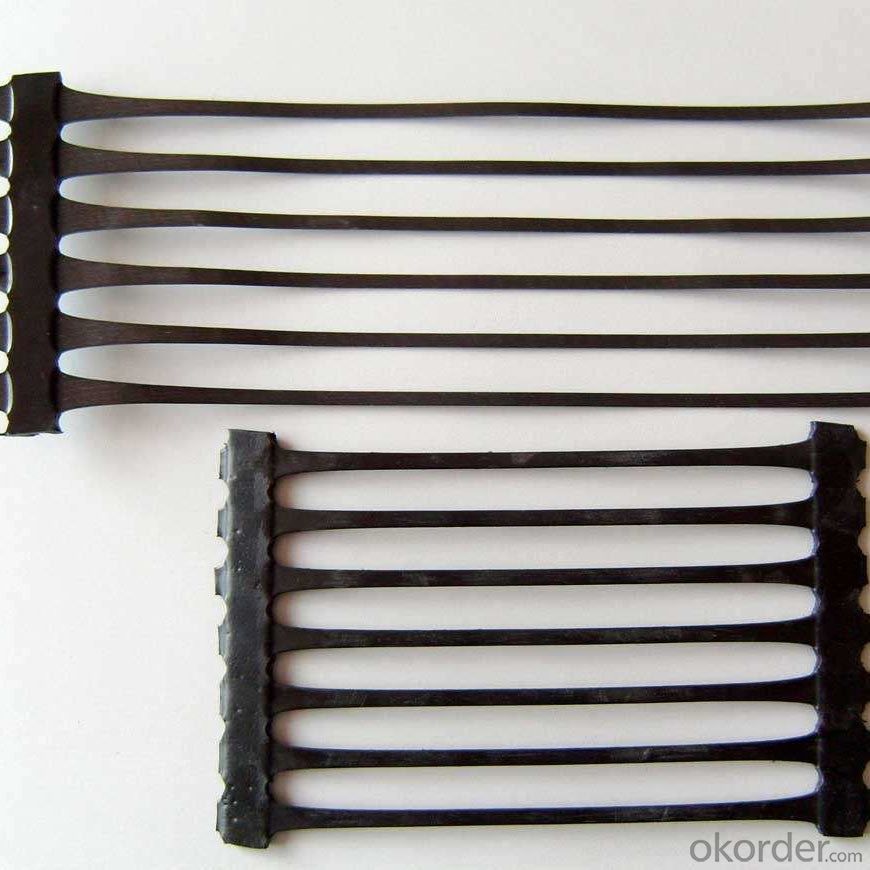
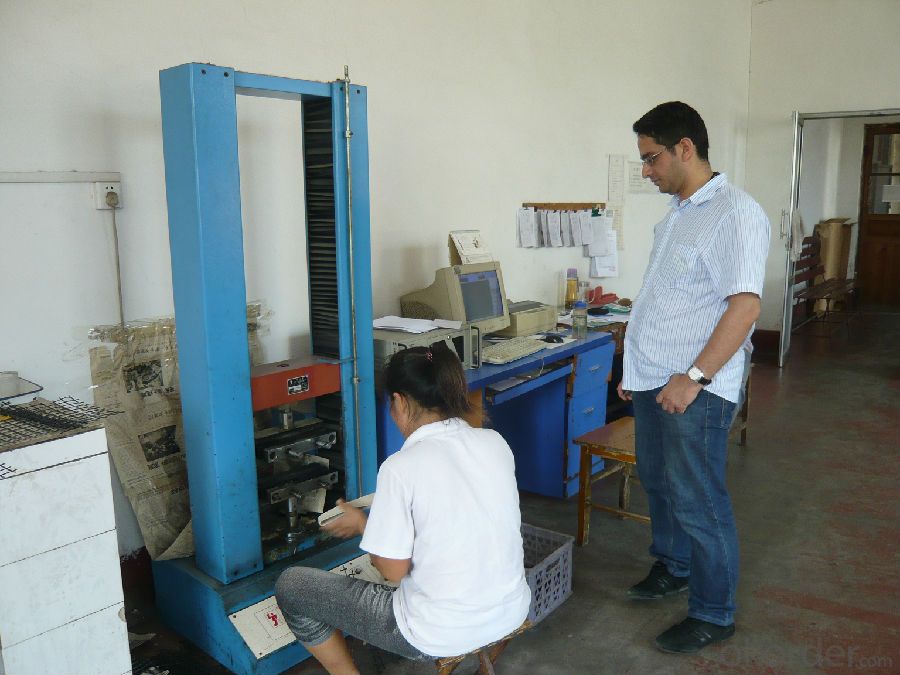
FAQ of Fiberglass Earthwork Base Material Geogrid:
1. What are we supplying?
We are specialized in producing Geosynthetic materials, like Geogrid Series, HDPE Geocell, Geonet, Geotextile, Geomat, Tri Denmensional Composite Grainage Geonet, and Geomembrane Series.
.
2. How Many years experience do we have?
We have been exported to more than 20 countries in the past 15 years.
3. How long do we usually reply your request?
We always reply our customer within 24 hours.
- Q: What is the typical installation time for geogrids?
- The typical installation time for geogrids can vary depending on the size and complexity of the project, but it usually ranges from a few hours to a few days.
- Q: What is the typical cost of a geogrid roll?
- The typical cost of a geogrid roll can vary depending on factors such as the type of geogrid, size of the roll, and supplier. However, on average, geogrid rolls can range from around $100 to $500 per roll.
- Q: How do geogrids improve the performance of geosynthetic tube structures?
- Geogrids improve the performance of geosynthetic tube structures by providing enhanced strength and stability. They act as a reinforcement element, distributing and transferring loads more efficiently across the structure. This reinforcement helps to mitigate potential deformations and structural failures, ultimately increasing the overall performance and longevity of the geosynthetic tube structures.
- Q: What is the recommended overlap distance for geogrid seams?
- The recommended overlap distance for geogrid seams varies depending on the specific application and manufacturer's guidelines. However, in general, a minimum overlap distance of 12-18 inches is often recommended to ensure proper connection and strength of the geogrid.
- Q: How do geogrids improve the performance of geocomposite drains?
- Geogrids improve the performance of geocomposite drains by providing reinforcement and stability to the drain system. They enhance the load-bearing capacity of the drain, prevent soil movement, and distribute the load more evenly. This helps in increasing the overall strength and longevity of the drain, improving its performance and effectiveness in draining water.
- Q: How do geogrids help in reducing the use of natural resources?
- Geogrids help in reducing the use of natural resources by reinforcing and stabilizing soil, thereby minimizing the need for excessive excavation and the use of additional materials such as stone or concrete. This reduces the demand for natural resources like aggregates, sand, and gravel, leading to a more sustainable and eco-friendly construction process.
- Q: How do geogrids help in reducing the risk of landslides?
- Geogrids help in reducing the risk of landslides by providing stability and reinforcement to the soil. They are typically made of high-strength polymers and are installed horizontally or vertically within the soil mass. By interlocking with the soil particles, geogrids improve the overall strength of the soil and enhance its resistance to shear forces. This reinforcement helps to prevent soil movement and sliding, thereby reducing the likelihood of landslides.
- Q: Can geogrids be used in shoreline protection against wave action?
- Yes, geogrids can be used in shoreline protection against wave action. Geogrids are commonly used to stabilize soil and prevent erosion. When installed along the shoreline, geogrids can help absorb the energy of the waves, reduce erosion, and provide protection to the shoreline. They are often combined with other materials, such as rocks or vegetation, to create an effective barrier against wave action.
- Q: Are geogrids suitable for use in railway ballast reinforcement?
- Yes, geogrids are suitable for use in railway ballast reinforcement. Geogrids provide effective reinforcement by distributing load and reducing lateral movement of the ballast, thus enhancing the stability and longevity of railway tracks.
- Q: What are the long-term effects of using geogrids?
- The long-term effects of using geogrids include improved soil stability and increased load-bearing capacity, reduced soil erosion and sedimentation, enhanced pavement performance, and prolonged lifespan of infrastructure projects. Additionally, geogrids can contribute to cost savings through reduced maintenance and repair needs.
Send your message to us
Uniaxial Fiberglass Earthwork Base Material Geogrid
- Loading Port:
- Shanghai
- Payment Terms:
- TT OR LC
- Min Order Qty:
- 50000 m²
- Supply Capability:
- 200000 m²/month
OKorder Service Pledge
OKorder Financial Service
Similar products
Hot products
Hot Searches
Related keywords
